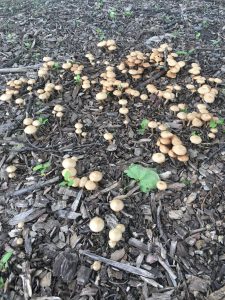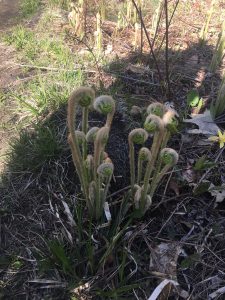Hello nature friends!
Yesterday, I stumbled upon an exciting discovery in my own backyard. Outside the Choates, at the foot of a tree, I found a large cluster of mushrooms! I must have passed these many times on my way to an from my dorm, but had never noticed them before.
My attempt at identifying this mushroom (out of the 5.1 million species of mushroom out there!) with my mediocre identification skills and the use of the internet led me to believe it is lactarius piperatus, otherwise known as Peppery Milkcap (on a sidenote, I highly recommend spending some time browsing the creative names people have come up with to name mushrooms–very entertaining.)
If my identification is correct, it seems that this mushroom is “semi-edible,” as in it can technically be eaten, but has a poor taste. It can, however, be used as seasoning when dried. When cut, the mushroom bleeds whitish, peppery-tasting milk.I definitely don’t plan on snacking on these mushrooms anytime soon, despite their convenience to my dorm.
The species is widely distributed in both Europe and eastern North America, and has been accidentally introduced to Australia as well.
Have any of you seen these mushrooms around campus? What do you think of my identification?
Until next time!!
Frances


